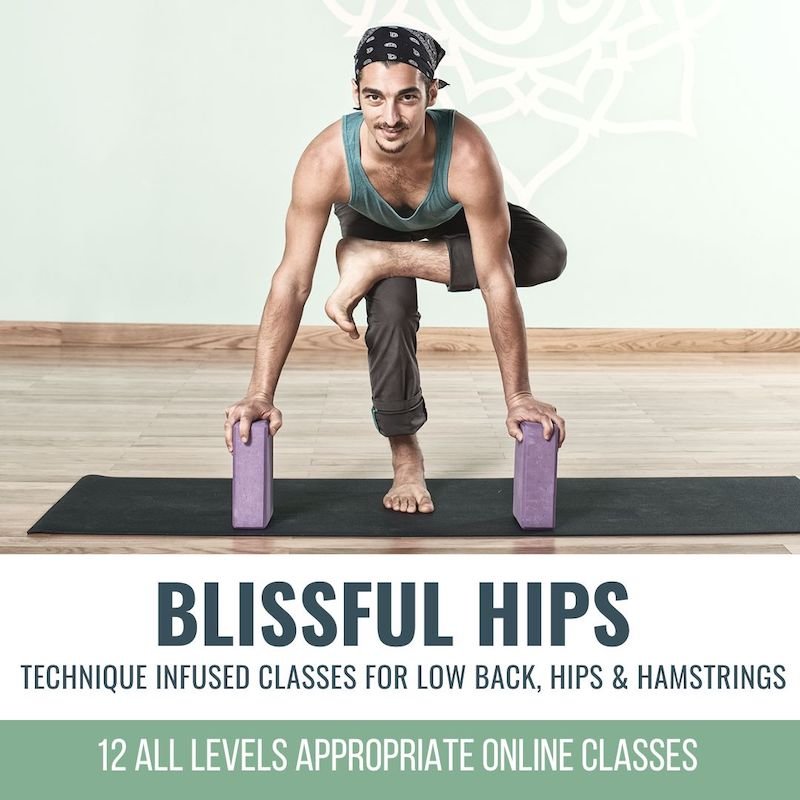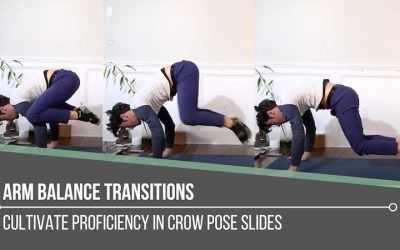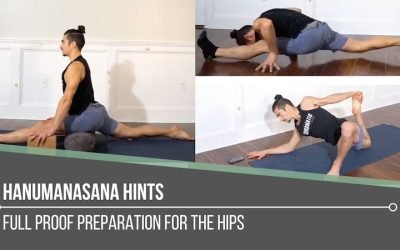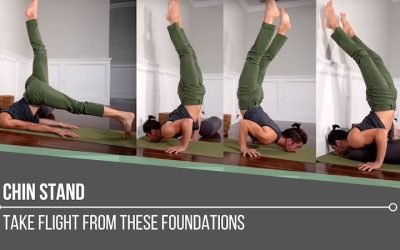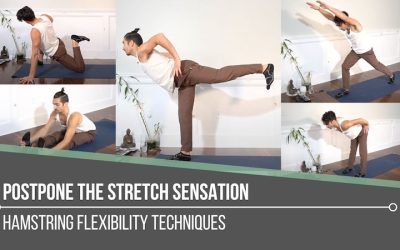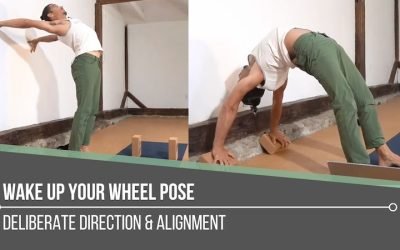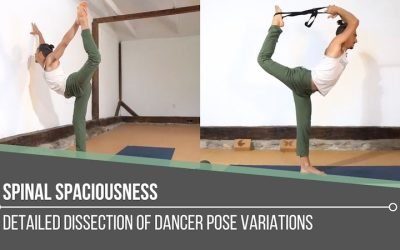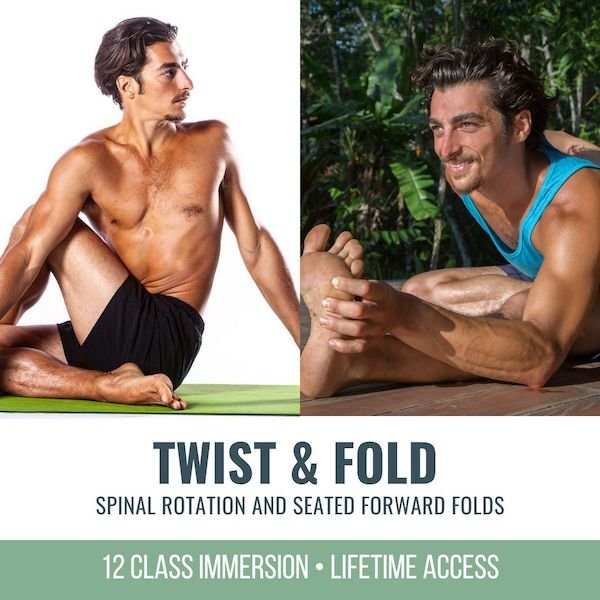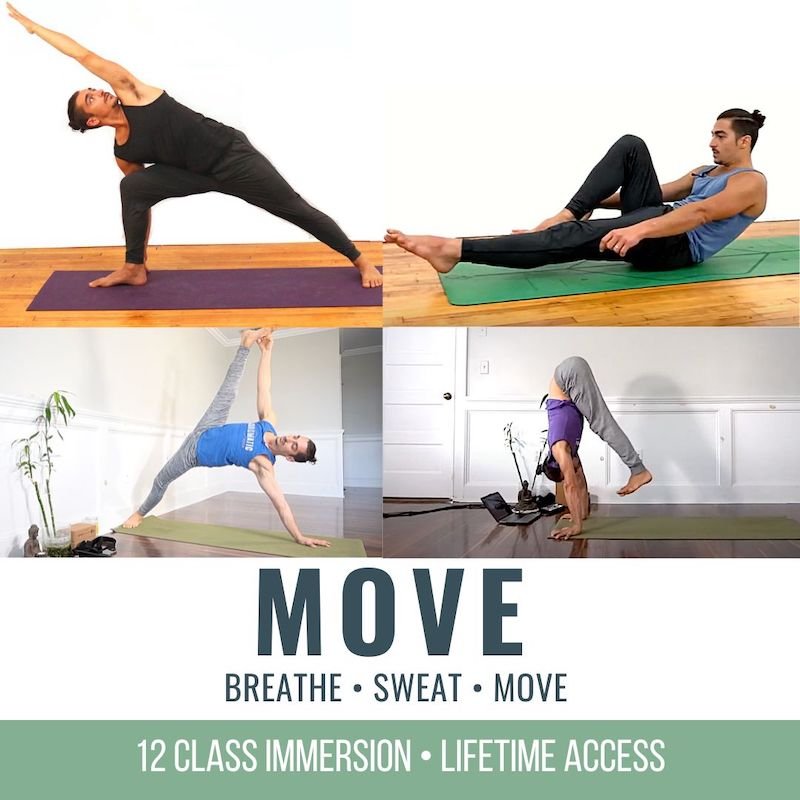Arm Balance TransitionskakasanaARM BALANCE TRANSITIONS Arm balance postures can be challenging enough without attempting to layer on a smooth transition in and out of them. However, fluid transitions are a natural progression in our yoga practice; they also provide...
Connect To Your Abductor Muscles
Connect to Your Abductor Muscles
5 Unique Variations for Increased Stretch and Strength
hip stability
CONNECT TO YOUR ABDUCTOR MUSCLES
Once you’ve been exposed to what’s possible in your asana practice, there’s no turning back. What I mean is that it’s possible to completely transform your practice once you realize just how many opportunities there are to implement strength. These opportunities exist in places you may not have considered before. As for stretching, it may seem easier to find opportunities to stretch, but implementing effective stretch methods is another thing entirely. Practicing with Matt opens the doors to both effective stretching and strengthening. In today’s video, it’s all about your abductor muscles. What you’ll see are 5 posture variations you can start implementing today.
One of the major roles of your abductor muscles is to provide hip stability, so it’s imperative that you implement effective stretch and strengthening techniques to promote the health of your abductor muscles and surrounding tissues.
BLISSFUL HIPS
December 2023 Immersion
- Technique-infused yoga classes
- Nondogmatic and effective alignment
- Improve low back health
- Increase hamstring and hip flexor mobility
- Improve flexibility of inner thighs and outer hips
- Improve posture on and off the mat
- 12 classes included
- Livestream optional; all classes available on demand after livestream’s complete
Registration now open!
ABDUCTOR MUSCLE ANATOMY AND PELVIC STABILITY
The action of the abductor muscles is to move your legs away from the midline of the body. These muscles also assist in stabilizing the pelvis. A telltale sign that your abductor muscles are extremely flexible or potentially weak is the presence of a significant hip sway when walking. Alternatively, when your abductor muscles are tight, it may be more challenging to adduct the upper thigh bones because of the pull from the tension in the abductor muscles. In order to create pelvic stability, you need suppleness in the abductor muscles. Engaging in opportunities to both stretch and strengthen will help you nurture more supple muscles.
There are 4 main abductor muscles: gluteus medius, gluteus minimus, tensor fasciae latae (TFL), and gluteus maximus. Even though TFL is a hip flexor and gluteus maximus extends the hips, they also abduct the legs when they work together.
WATCH THE VIDEO
CONNECT TO YOUR ABDUCTOR MUSCLES: 5 UNIQUE VARIATIONS FOR INCREASED STRETCH AND STRENGTH
WARRIOR II AND SIDE PLANK TO PROMOTE STRENGTH
Warrior II
This posture can serve you in ways you may not expect. The technique to create strength in the abductor muscles here is to utilize a self-adjustment. Placing your hand on the outside of your front knee and pressing your hand into your knee and your knee into your hand will work to awaken and strengthen all four abductor muscles.
Side Plank with a Strap
Grab a strap for this one! The strap helps provide the feedback and the self-adjustment required to connect to your abductor muscles. You’ll see in the video that the trick here is to turn your pelvis slightly towards the ground as you push your legs apart (abduct) in order to create the required tension in the strap. Think about pulling the back of your legs apart as opposed to opening your pelvis.
200 HOUR ONLINE TEACHER TRAINING
GET CERTIFIED & DEEPEN YOUR YOGA PRACTICE
- Deepen your yoga practice
- Build confidence speaking in front of groups in person and online
- Learn foundational class structures and templates
- Learn techniques for a wide range of yoga postures
- Get certified and highly qualified to teach yoga
- Yoga Alliance Globally Recognized Certification Program
CHAIR POSE TICK TOCKS
Now, this is a really creative variation! Once again, the strap is your best friend. Sensationally, it will provide more information from your body, which will help you discern which actions you need to implement so as to connect with and activate your abductor muscles. Matt emphasizes that the action of pressing your heels apart provides a slight internal rotation of the femur bones, which helps to ignite the TFL. As you “tick tock” from side to side, you maintain the abduction of the legs in conjunction with that internal rotation so that you can indeed feel the intended contraction and effort from your abductor muscles.
Practicing in this way builds neural pathways in the brain, promoting a healthy mind-body connection. The more you repeat actions like this, you’re teaching and telling your body how to respond more effectively in order to develop greater strength.
300 HOUR ONLINE TEACHER TRAINING
GET 500 HOUR CERTIFIED AS A MASTER TEACHER
Master your skill set as a teacher through refined techniques, anatomy, biomechanics, sequencing, philosophy, meditation techniques, theming, yoga business, and much more!
- Get 500 hour certified
- Learn anatomy, biomechanics, asana techniques
- Expand your teaching skills
- Masterful sequencing and verbal delivery
- Learn meditation and breathwork techniques
- Transformative tools: theming, dharma talks, satsang
EFFECTIVELY STRETCH IN PIGEON AND EAGLE POSE
Pigeon Pose
To connect to your abductor muscles in Pigeon Pose, it’s about where you place your effort. If the right leg is forward, you’ll push your front thigh bone down and to the right, which will promote strength. This will also send your body to the left, which will also spark a stretch.
Eagle Pose on Your Back
In a standing Eagle Pose, the standing leg needs to be strong and the crossover leg flexible in the abductor muscles. In the video, Matt provides the variation on your back as a way to more easily negotiate the flexibility aspect of the posture.
A golden tip is to hike the hip of the top leg in order to gain more access to the bind, providing more stretch. In the video, you’ll see how Matt adds a lift of the legs to go even deeper with the stretch.
DO MORE THAN THE POSTURE
Throughout his classes, Matt continuously reminds us that it’s not about “just doing the posture” but about your particular intent and the purpose it provides for you as an individual in a given moment.
Ultimately, maintaining the health of your muscles—cultivating both strength and flexibility—will lead you to a stronger, more well-developed asana practice along with those same benefits in your daily life.
You can start practicing in Matt’s Blissful Hips Immersion and learn how to safely and effectively unlock these benefits.
The 200 Hr. Teacher Training: Click Here to See the Next Start Date
The 300 Hr. Advanced Teacher Training: Click Here to See the Next Start Date
Article by Trish Curling
Videos Extracted From: Blissful Hips Immersion
ONLINE ANATOMY COURSE
- Accessible, exciting, and easy to learn
- Anatomy and biomechanics for yoga
- Appropriate for both teachers and students
- Learn joint alignment vs pose alignment
- Demystify yoga poses and transitions
- Release aches and pains
- Learn how to avoid common injuries
- Caters to all levels with modifications and props
- 20 hours Continued Education Credits with Yoga Alliance
- 20 hours toward Chromatic Yoga Certification and 300 Hour
- Lifetime access
Continue Learning
Arm Balance Transitions
Hanumanasana Hints
Hanumanasana HintssplitsHANUMANASANA HINTS Applying intelligent techniques to a posture like Hanumanasana is crucial—simply hoping for the best is definitely not the way to go! That mindset leaves us vulnerable to injury. Hanumanasana is also the type of pose that can...
Chin Stand
Chin Standganda bherundasanaCHIN STAND Without a doubt, Chin Stand requires preparation. This posture must be approached with the utmost humility, essential in order to respect the potential risk. If this pose is not explored regularly in our physical practice, it may...
Postpone The Stretch Sensation
Postpone the Stretch SensationflexibilityPOSTPONE THE STRETCH SENSATION If one of the goals of our physical yoga practice is to increase flexibility, we may automatically believe that we just need to stretch more. It’s critical that we understand that increasing...
Wake Up Your Wheel Pose
Wake Up Your Wheel Poseheart openerWAKE UP YOUR WHEEL POSE We don’t have to question it—we know whether or not we’re feeling open, free, and strong in Wheel Pose. There’s a lightness and expansiveness that takes over when everything falls into place: From the initial...
Spinal Spaciousness
Spinal Spaciousnessdancer poseSPINAL SPACIOUSNESS Some key indicators of spinal health include strong bones, durable yet flexible ligaments, supple discs, and strong supportive muscles. Aside from nutrition, it’s not enough to say that movement in general is enough to...
THE FREE TECHNIQUE PACK
When You Subscribe, You Will Get Instant Access to
- the Technique Pack: 15 yoga pose breakdowns
- exclusive online course discounts
- exclusive blogs and videos

